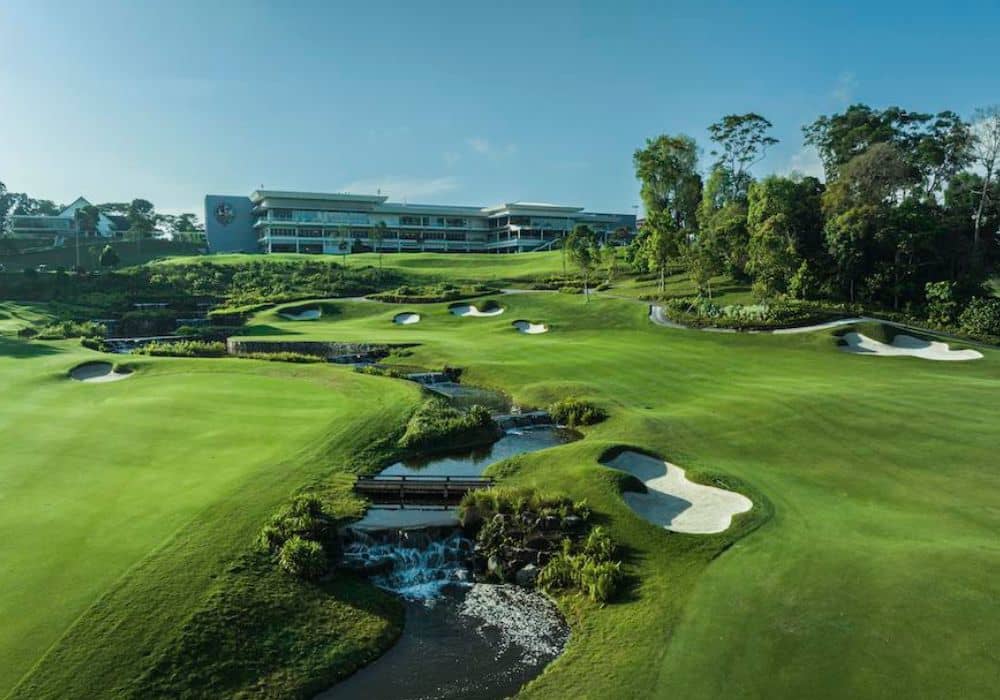Zoysia sp combines high aesthetic quality, high sustainability and easy handling, which is why its use is becoming more and more widespread, mainly in landscaping and golf courses.
It is a C4 (warm season) variety and therefore shares characteristics with other C4 varieties:
- High heat tolerance.
- High drought tolerance.
- Higher disease tolerance than C3 varieties.
On the other hand, it has some special characteristics that differentiate it from other warm season varieties:
Low mowing requirements
Estimated mowing requirements are 50% less than conventional grasses such as Fescue, Rye Grass, Bermuda etc.
Depending on the species the mowing height can vary from 2 mm for Zoysia Ultradwarf Lazer (greens) to 50 mm for Zoysia japonica Empire.
Some golf zoysias such as Z. Trinity (L1F) allow very different heights of cut so that they can be used for Tee to Green.
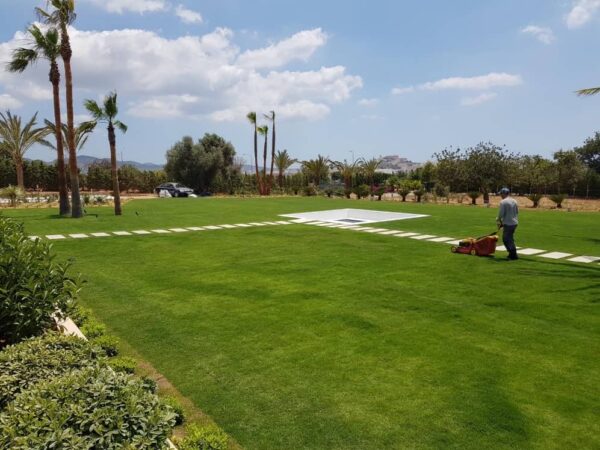
Mowing with rotary mower in the garden of Z. Empire
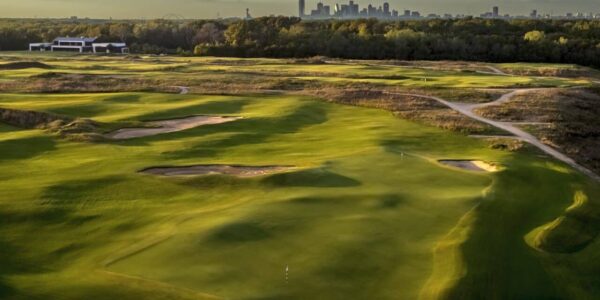
Golf Trinity Forest en Dallas. Zoysia Trinity (L1F) de tee a green
Lower fertiliser requirements
Nitrogen requirements are 40-60% less than Bermuda or fescue varieties.
Higher pest resistance
More resistant to insect pests than conventional grasses due to its lignified leaf, which significantly reduces the use of insecticides.
Greater shade tolerance
Withstands tree shade well and is more tolerant to light shortage than other c4 varieties. Species such as Z. Zeon does well with only 3-4 hours of direct light per day.
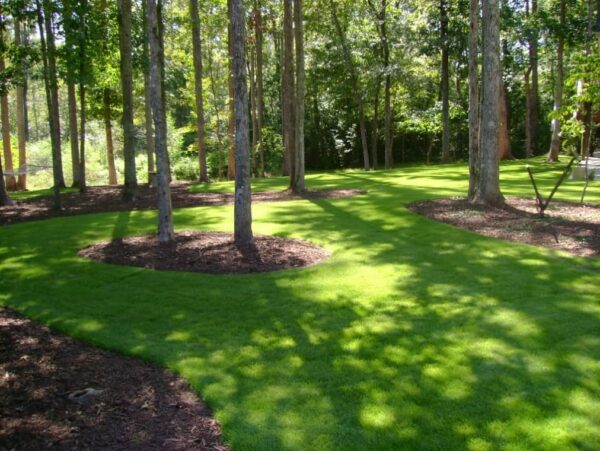
Zoysia zeon in low light conditions
Lower water consumption
Some slow-growing Zoysia species need less water, around 60-80 % compared to other c4. However, it will depend on the type of maintenance and fertilisation we are applying.
Dormancy
Some varieties of Zoysia such as Z. Zeon , Z. Geo or Z. Trinity go into dormancy later than Bermuda and paspalum species and therefore keep their green colour longer.
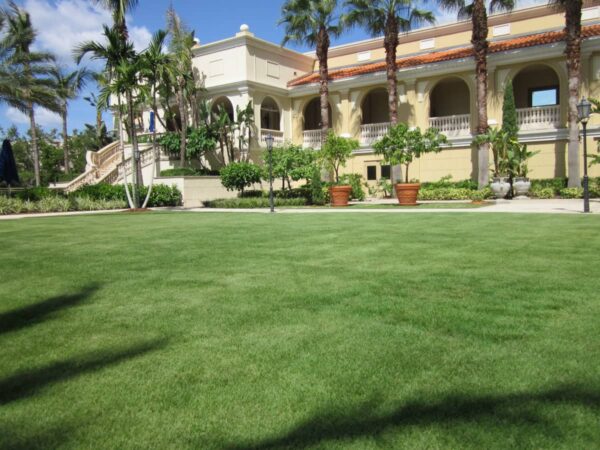
Zoysia in Hotel
In order to take advantage of all these benefits, simple but correct maintenance is necessary. The most important aspects of maintenance can be summarised as follows:
- Control the thatch in spring, when the plant starts to become active, by scarifying or low mowing.
- Do not fertilise with large amounts of nitrogen at one time.
- Do not apply more water than necessary.
- If necessary, treat with a preventive fungicide in autumn.
One of the undesirable effects of poor maintenance is the appearance of fungal diseases, especially Rhizoctonia.
Rhizoctonia is a genus of fungus that can cause various diseases on plants, including Zoysia turf. One of the most common problems is Rhizoctonia Large Patch caused by Rhizoctonia solani. It usually occurs in autumn or early spring.
Typical symptoms of infection may include:
- Brown patches: Circular areas of affected turf turning brown, with darker edges and a paler centre.
- Abnormal texture: Affected turf may have an irregular texture, often thinner and weaker than healthy turf.
- Fuzzy edges: The edges of patches may be fuzzy and poorly defined, which can make it easy for the infection to spread.
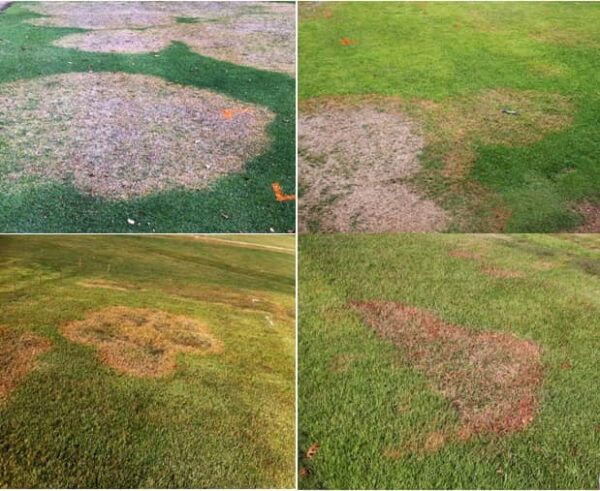
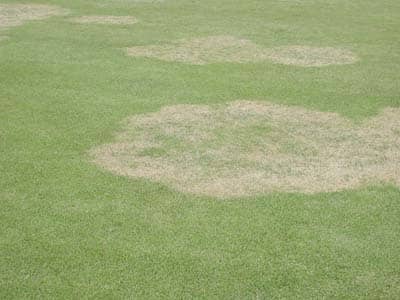
Rhizoctonia solani in turfgrass
To manage Zoysia problems with Rhizoctonia, here are some measures you can consider:
- Soil aeration: regular soil aeration can help improve drainage and reduce moisture in the lawn, which will make it more difficult for fungal growth.
- Control Thatch. It creates a hydrophobic layer that creates moisture conditions conducive to disease development.
- Proper fertilisation: Provide the right amount of nutrients to the lawn. A healthy lawn is less susceptible to disease.
- Irrigation management: Water early in the morning to allow the turf to dry out during the day. Avoid overwatering and waterlogging.
- Fungicides In cases of adverse conditions, preventive fungicide application may be considered. This should be done in September-October. Two treatments with a broad spectrum fungicide such as azoxystrobin at two repetitions of 0.5 kg/ha are recommended. Spaced 15 days apart. If the disease appears, it should also be applied in spring.
Proper fertilisation is essential to maintain a healthy and vigorous Zoysia lawn.
Some general guidelines for fertilising Zoysia are:
Soil analysis: A soil analysis can be done to determine the levels of nutrients present in your soil. This will help you to know which nutrients are needed and in what quantity.
Balanced fertilisation: Use a balanced fertiliser that contains an adequate ratio of nitrogen (N), phosphorus (P) and potassium (K), along with other micronutrients.
Applications throughout the year: Fertilise in spring and summer to coincide with the stage of greatest growth of the lawn:
- Spring: In the spring, use a fertiliser with a slightly higher proportion of nitrogen to promote growth and deep green colour.
- Summer: In the summer, switch to a fertiliser with a more balanced ratio of nutrients to promote root development and nutrient storage for the winter. It is not recommended to stop fertilising with nitrogen from the end of August onwards.
Avoid excess nitrogen:. Avoid applying too much nitrogen at once. The nitrogen needs of a zoysia are around 150 pc/ha per year.
Consider slow-release fertilisers: Especially in summer. A first treatment with fast-acting fertilisers can be made in spring for a quick green-up. Slow-release fertilisers provide nutrients gradually over time, reducing the possibility of overfeeding and minimising growth peaks.
As we have seen, with simple nutrition and irrigation management and proper maintenance we can have a high quality Zoysia lawn that will offer environmental, social and business benefits:
- High sustainability.
- Low input needs.
- Economic savings.
- Lower carbon footprint.
- Lower water footprint.
- Longer durability.
- Less polluting effect.

Zoysia Zeon on Golf Course

